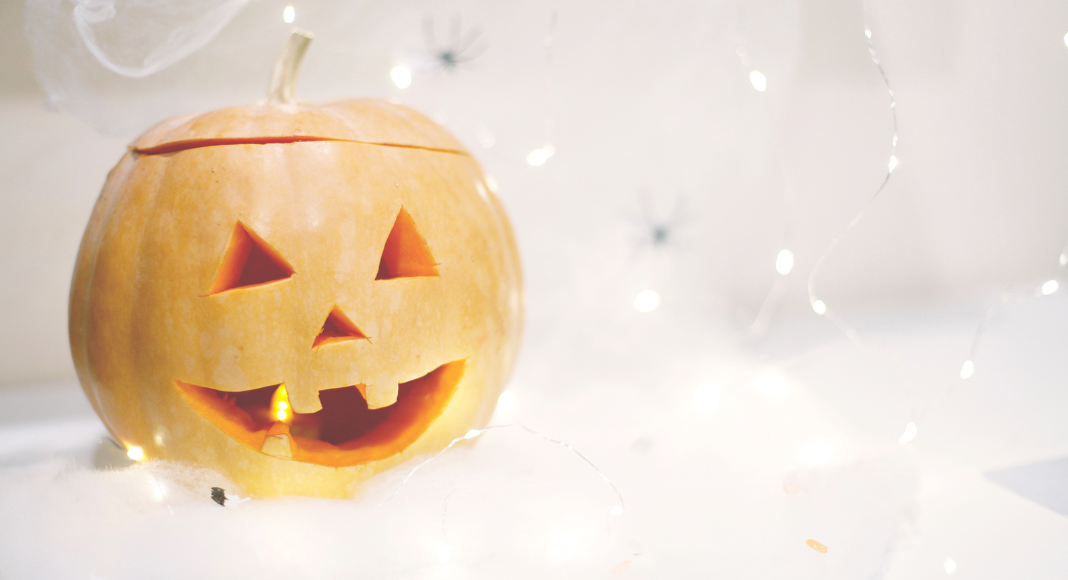Did you know that our children’s (and a large number of adults) favorite dress-up holiday of Halloween actually started in Ireland? According to World History Encyclopedia, the history of Halloween dates back to ancient Ireland’s celebration of the Festival of Samhain.
This festival celebrated the year’s harvest and the beginning of the winter season. The belief is that the veil between the living and the dead is at its thinnest on the eve of October 31st.  This means that loved ones who have died in the past year can possibly visit, fairies and elves can create mischief, and those who you have wronged that have passed can possibly vandalize your home. In order to ward off these ill tidings, people dress in disguises (modern day: costumes) as to not be recognized on this night.
This means that loved ones who have died in the past year can possibly visit, fairies and elves can create mischief, and those who you have wronged that have passed can possibly vandalize your home. In order to ward off these ill tidings, people dress in disguises (modern day: costumes) as to not be recognized on this night.
While the festival of Samhain pre-dates Christianity, Catholicism spread and became dominant in Ireland by St. Patrick in the 5th Century.
When the Catholic Church arrived in Ireland they incorporated the tradition. They did this by moving its previous observance in May of All Saints Day with the observance of All Saints’ Day on November 1st. The night before this Holy Day, it was acceptable to go out “souling” to your neighbors in hopes that they would demonstrate charity by giving small food items.
In return for passing out charity, the church teaches that this deed would help souls get out of purgatory, so living relatives were obliged to make the effort for their dearly departed. People in Ireland would go out in costumes on All Hallows Eve “souling” for treats from their neighbors.
While out “souling” in Ireland, one carries a lit carved turnip, to be protected from the likes of “Stingy Jack” who famously fooled the devil into banishing him from hell, yet his sins would not permit him entry to heaven.
When the Irish immigrated to the United States during the Potato Famine from 1845-1849, they brought their tradition of going out “souling” on All Hallow’s Eve with them. However, they found that pumpkins were much more conducive for carving. The jack-o-lantern became a pumpkin.
Making mischief in the United States became part of the tradition in the 1920s.
Vandals would roam on Halloween; raiding neighbors’ gardens and vandalism were common. Eventually the mischief led to the lighting of house fires near the night of the 31st.
The tradition of children going out “trick-or-treating” was first chronicled in Canada in 1927, as a trade off–either engaging in mischief or collecting a small candy or treat. The modern day commercialization of Halloween has turned it into the second-highest grossing holiday for consumers in the United States. It is second only to Christmas.
Halloween is a holiday of transformation. The transformation of wearing a costume. Becoming someone else for one night. The transformation of the seasons from fall into winter. It is also a celebration that is associated with the lighting of fires in ancient Ireland. Bones were gathered and burned on Samhain; bone-fires eventually became what we now know as “bonfires.”
It is a favorite holiday for adults and children alike.
This holiday is celebrated the entire month of October in some households. There are many adult-themed Halloween parties through the month of October, as well as for children. We love to dress our children up and go out and celebrate Halloween. We also love a good bonfire. Michigan weather has given us a wide range of temperatures over the years to celebrate. One year I remember sunburn on Halloween. I can also remember snow flying on the same day in another year.
The passing down of traditions is something that we all experience, in our diverse world. Halloween has been an American tradition for well over a hundred years. Oftentimes we do not know how these traditions came to be. This information is a reminder of where this tradition comes from to pass on to our children this Halloween. So get out there with your littles and partake and get your “trick-or-treat” on!









